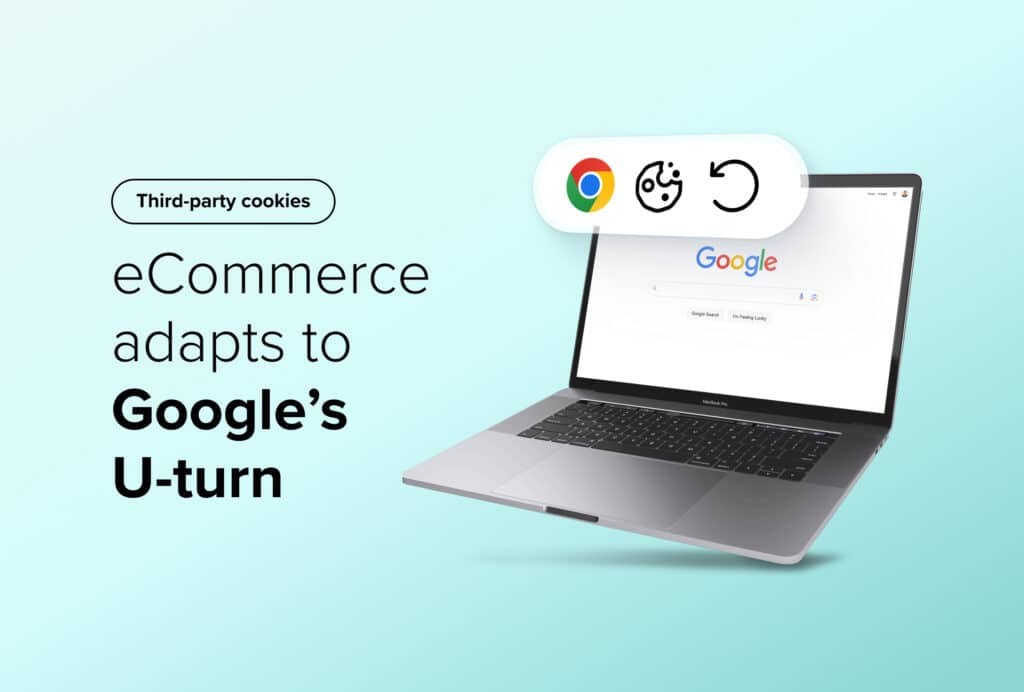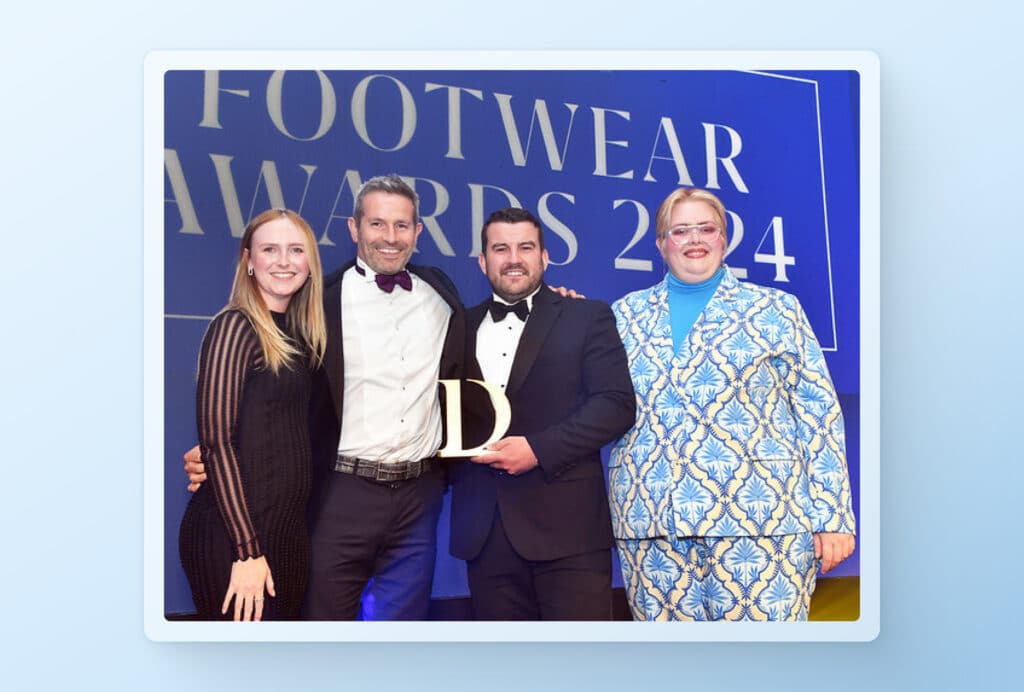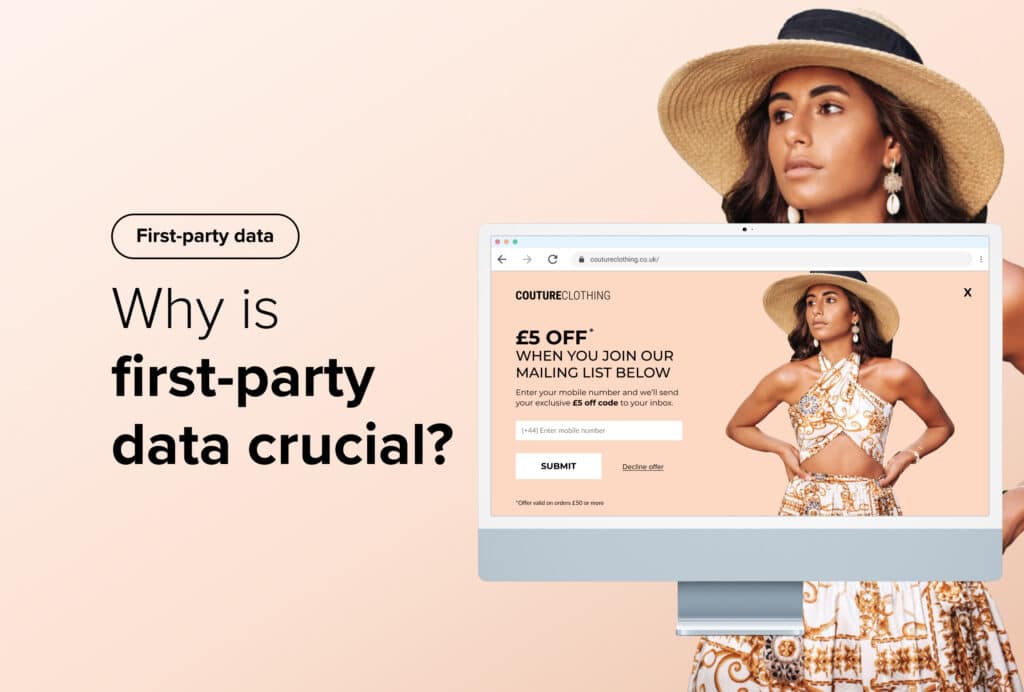The Dos and Don’ts of Browse Abandonment Emails
By Bethany Llewellyn • Last updated: Monday Jul 15th, 2024
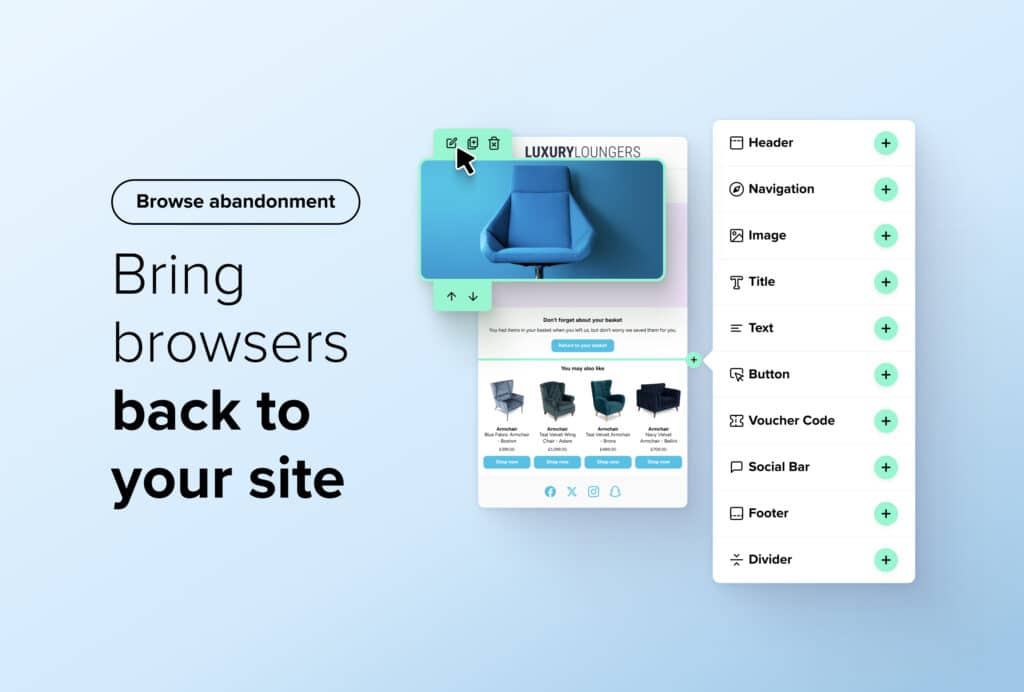
With the rise of online shopping in recent years, website abandonment has become an increasing challenge for eCommerce businesses.
In this article, we’ll cover the best practices for browse abandonment emails, and how online retailers can effectively use them to recapture lost website visitors and enhance their conversion rate optimisation efforts.
Suggested reading: Discover the importance of email marketing to your business in our blog, ‘Why Are Email Lists So Valuable to eCommerce Sites?’.
What are browse abandonment emails?
Browse abandonment emails are automated messages that re-engage potential customers who have shown interest in your products or services.
There are two key functionalities behind the implementation of successful browse abandonment campaigns – behavioural analysis and triggers. Here’s what you need to know:
- Behaviour analysis: Tracking on-site user behaviour is crucial when sending effective browse abandonment emails.
- By analysing the pages visited or products viewed, you can gauge the level of purchase intent and suggest relevant products in future communications.
- Triggering emails: Your browse abandonment emails are triggered based on specific conditions, such as a user browsing your site and then leaving without adding items to their cart. By tailoring these triggers, you can target campaigns to recapture the attention of potential customers at crucial moments in their buying journey.
Creating a powerful retargeting campaign begins with considering these functionalities.
Browse abandonment vs cart abandonment
Unlike cart abandonment emails, where a user leaves after adding products to their basket, browse abandonment targets users who exit your site before ever reaching the cart stage.
This subtle yet significant difference highlights the importance of retargeting shoppers who have shown intent to purchase by engaging with your site.
There’s also an opportunity to use shopping cart recovery strategies, like exit-intent pop-ups, to reduce your abandonment rate.
Suggested reading: Find out more information on how you can lower your browse abandonment rate in our blog, ‘How to Effectively Retarget Cart Abandoners’.
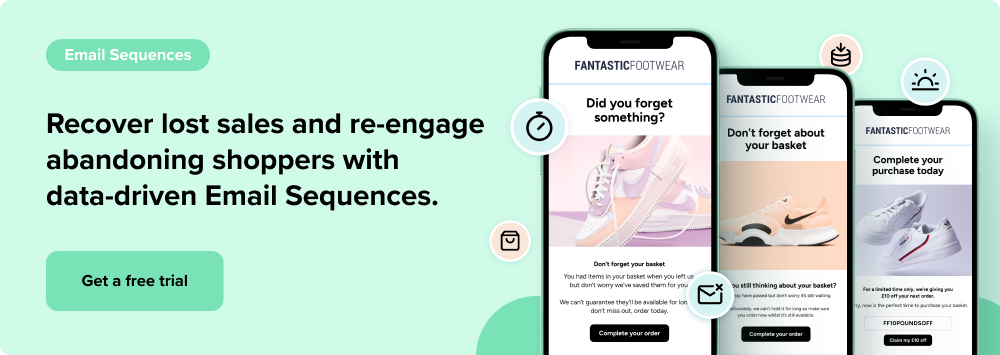
The dos of browse abandonment
Personalisation matters
Personalisation is essential in the world of eCommerce to ensure you’re providing great customer experiences that not only convert but make shoppers feel valued.
Your browse abandonment sequence is included in this sentiment.
Customers now expect – and respond better to – personalised communications. Research shows that almost one-third of consumers wish their shopping experiences were more personalised.1
Using personalisation techniques in your email marketing goes beyond simply addressing your customer by name. They include:
- Segmentation: Split your audience into demographics to ensure you send relevant content to each subscriber, this could be by age, location, or browsing behaviour.
- Dynamic content: Personalise the content of the email based on the recipient’s behaviour. For example, how much time they have spent on the site or a specific product page.
- Utilising events: Sending your audience offers, deals, or even a simple message on their birthday or key calendar dates is a sure way to build trust with your audience.
- Tailored recommendations: You have all the data you need on your customers, so use it. Send your subscribers relevant product Recommendations to enhance product discovery and encourage them to head back to your site to complete a purchase.
By tailoring messages to the individual shopper’s journey, you can significantly enhance your customer retention and re-engagement efforts.
Remember: Effective personalisation isn’t all about that one purchase. Of course, securing sales is important, but hyper-personalisation strategies are about creating a shopping experience that feels unique to each customer.
This approach not only encourages them to complete their purchases but also fosters long-term customer loyalty.
Timing is everything
Timing plays a pivotal role in the effectiveness of browse abandonment emails.
A timely email could be the gentle nudge that directs your potential customer back into their shopping journey to complete their purchase.
Ideally, the initial email should be sent within a few hours of their abandonment to successfully re-capture the user’s interest whilst your brand is still fresh in their mind.
Pro tip: It’s crucial to monitor and analyse the performance of your browse abandonment email campaign so you can identify any opportunities for improvement.
Are they reeling users back in? Are there any noticeable patterns in the timing that seem to work better? This is where A/B testing is invaluable.
By experimenting with different send times, you can determine the most effective time to send your emails to your audience, and ultimately optimise your conversion funnel.
Clear messaging is essential
Clear messaging in your email marketing efforts is essential and should not be overlooked.
The goal of your retargeting email marketing strategy is to guide your customer seamlessly back to their on-site journey.
With this in mind, you want to make sure your messaging enables that.
To create effective browse abandonment emails that capture attention and draw your customers back to your site, you should:
- Use compelling but straightforward subject lines
- Ensure your email assets are optimised for all devices
- Have a clear call to action
Your return-to-cart emails will give your email subscribers the boost they need to head back to your site and complete their purchase.
Pro tip: Don’t stop at your emails. Seamlessly welcome shoppers back into their customer journey with targeted messaging on-site.
Using Digital Assitant’s Recently Viewed campaign, you can showcase the products they loved the last time they were browsing your site.
This blends the overall buying journey for your customers and ensures that every touch point, whether on-site or via email, is optimised for conversion.
Creating your own Digital Assistant dashboard is free, get started now and unlock a range of campaigns available to you right now, including strategies like Product Views, Reserve Stock Countdown and Free Delivery Countdown.
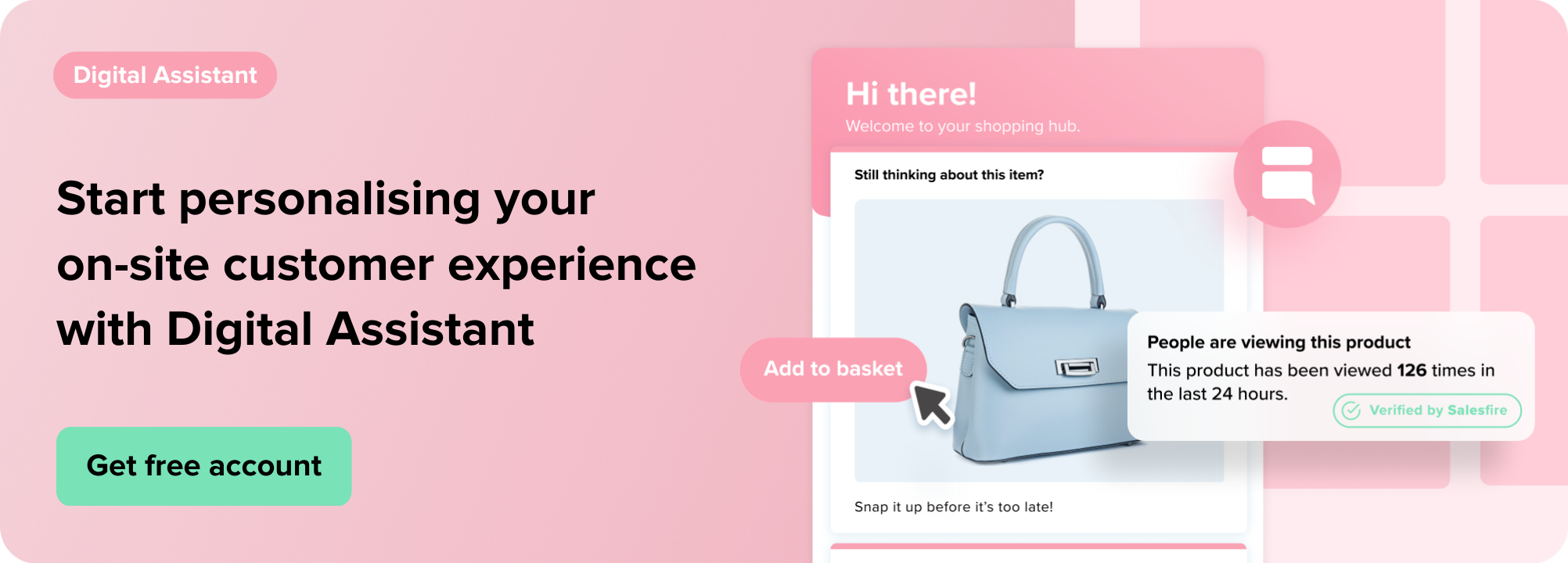
The don’ts of browse abandonment
Don’t overwhelm your audience
While timing and follow-up sequences are important, bombarding the user with excessive emails can backfire.
Sending too many emails in a short amount of time comes with risks. A study revealed that up to 51% of consumers have unsubscribed from mailing lists because they were receiving emails too often.2
What you can do: To prevent this, establish a cap on the number of browse abandonment emails a customer can receive within a given time frame.
With Salesfire’s Email Sequences tool, all campaigns are pre-set with optimal triggers and conditions, meaning you can launch your Browse Abandonment campaign with Salesfire in just a few minutes.
Since our strategies were created by eCommerce specialists, you can be sure that your retargeting campaigns are set for maximum effectiveness.
Pro tip: Provide an easy way for users to opt-out or amend their email preferences.
Not only does this ensure you’re remaining GDPR compliant but it shows you respect the customer’s inbox space and aligns with best practices for customer retention.
While this may seem counterintuitive, it means you can build a list of engaged subscribers who are more likely to purchase from your brand.
Don’t be too pushy
Engaging with customers without being pushy and overpowering is the key to a successful browse abandonment strategy.
To win back lost website visitors, retailers must focus on creating a balance between persuasion and respect for their customers’ decision-making process.
Consider reviewing and optimising the following elements of your browse abandonment email sequence to achieve this:
- Send times: The time you send your emails is dependent on your audience. By A/B testing your send times, you can be sure your recipients are receiving your email comms at a time they’re most likely to read their emails. With browse abandonment campaigns, we recommend sending the first email within the first hour to ensure your brand is fresh in their mind.
- Relevancy: Ensure your browse abandonment content is relevant and tailored to each subscriber. For example, if a user has viewed a specific product category, like women’s shoes, it would be much less effective if you were to follow up with a browse abandonment email that recommended men’s shoes.
- Messaging: Having a brand identity and personality is crucial to building trust with your customers. Once you identify your brand tone of voice, you should keep this throughout your messaging in your retargeting emails. This consistency will help users connect with your brand and will increase your retention rates.
Needless to say, you want to make your customers feel supported in their buying journey, not pressured.
What you can do: Instead of using hard-sell tactics, you want to focus on providing value for your customers that makes them want to return to your site to complete a purchase.
Using customer segmentation and behavioural tracking, you can include content that supports users on their customer journey, such as:
- Product reviews
- User testimonials
- Further information on products they have already viewed
This approach is much more helpful and builds trust for your brand.
Over time, this will help you build stronger customer relationships that lead to repeat purchases.
Don’t rely on browse abandonment alone
For many successful eCommerce businesses, browse abandonment emails are a part of a diversified re-engagement strategy.
By incorporating other methods of lost sales recovery you can see more success. To accomplish this, we recommend that you:
- Streamline the on-site journey: Ensure that your website is as streamlined and user-friendly as possible. This could be done by optimising the checkout process, offering multiple payment options and enhancing your site for mobile commerce. All of these will prevent the user from abandoning your site in the first place.
- Implement remarketing ads: Use remarketing ads to remind customers of the products they were interested in when they visited your website. These ads can be placed across social media platforms to keep your business at the forefront of their mind.
- Offer incentivised reminders: Sometimes a customer needs a small nudge in the right direction to be reinjected back into the sales funnel. Offer incentives like discounts or free shipping to encourage customers to return to your site and complete a purchase.
- Optimise landing pages: Tailor your landing pages for returning visitors. Personalised landing pages can make a significant difference in recapturing the interest of someone who has previously visited your site but didn’t purchase with you.
Every customer is unique, so having an omnichannel approach to eCommerce abandonment increases the likelihood of reaching and engaging different segments of your audience.
Suggested reading: Learn how you can begin perfecting your omnichannel experience with our ‘Why You Need an Omnichannel eCommerce Strategy’ blog.
Recapture lost visitors to sell more
Browse abandonment emails are an integral part of leveraging and maximising the value of your customers.
Follow the do’s and don’ts of this browse abandonment emails guide to successfully reinject shoppers back into the customer journey, recover lost sales and achieve your business goals.
1 Insights from consumers and retailers into an omnichannel shopping experience | Rethinking Retail
2 Why consumers subscribe and unsubscribe from email | Hubspot
See how Salesfire’s Email Sequences can transform your user experience and help you recapture lost sales, speak to one of our experts at [email protected] or book a free demo.

